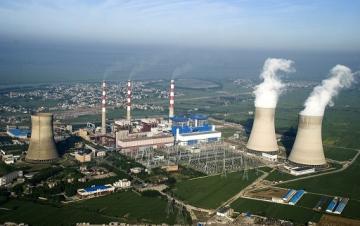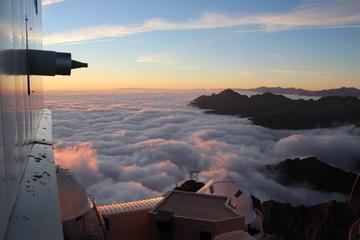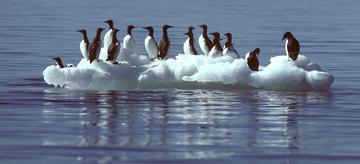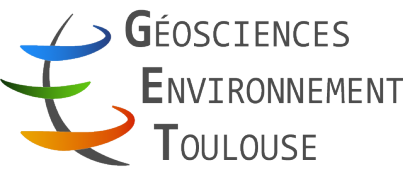Project Title: Exploring the Isotopic Dimension of the Global Mercury Cycle

Budget: 1.2 M€
Duration: 1/12/2010 to 31/11/2015
Follow us on Twitter: @GET_Hg and @GET_isotopes
Participants @GET: Jeroen Sonke (coordinator), Ruoyu Sun, David Point, Oleg Pokrovsky, Xuewu Fu, Lars-Eric Heimburger, Jeremy Masbou, Maxime Enrico, Nicolas Marusczak. Mercury Research Group and Stable Isotope Group websites
Collaborators:Gael Le Roux (EcoLab), Benjamin Guinot (LA) and approximately 50 scientists, technicians, engineers and PhD students in N-America, Asia and Europe.
Key publications:
Martin Jiskra, Jeroen E. Sonke, et al. (2018) A vegetation control on seasonal variations in global atmospheric mercury. Nature Geoscience. DOI: 10.1038/s41561-018-0078-8
Obrist, D., Agnan, Y., Jiskra, M., Olson, C. L., Colegrove, D. P., Hueber, J., Moore, C. W.,Sonke, J. E.and Helmig, D.: Tundra uptake of atmospheric elemental mercury drives Arctic mercury pollution, Nature, 547(7662), 2017, doi:10.1038/nature22997

Enrico, M., Le Roux, G., Marusczak, N., Heimburger, L-E., Claustres, A., Fu, X., Sun, R.,Sonke, J.E.(2016) Atmospheric mercury transfer to peat bogs dominated by gaseous elemental mercury dry deposition.ES&T, DOI: 10.1021/acs.est.5b06058

Amos, H.,Sonke. J.E.,et al. (2015) Observational and modeling constraints on global anthropogenic enrichment of mercury. ES&T, DOI: 10.1021/es5058665.

CH Lamborg, CR Hammerschmidt, KL Bowman, GJ Swarr, KM Munson, DC Ohnemus, PJ Lam, LE Heimbürger et al. (2014). A global ocean inventory of anthropogenic mercury based on water column measurements. Nature doi: 10.1038/nature13563

The main objective of the ERC MERCURY ISOTOPES project is to develop mercury (Hg) stable isotope signatures as tracers for Hg sources and transformation processes in the environment. Three main research themes are privileged:
1. Asian urban industrial Hg emissions. Asian Hg emissions from coal fired power plants impact both the local and global environment. Substantial interest exists in tracing these emissions. Hg stable isotope signatures vary among different coal mines in Asia and globally. We will investigate i. Whether coal fired power plant emissions at the smoke stack carry the same Hg isotope signatures as feed coal that enter the plants. i. The seasonal variations in Hg stable isotope signatures of well-mixed urban and industrial air in major Asian cities.

2. Atmospheric Hg dynamics and provenance. Gaseous elemental Hg (GEM) emissions are thought to have an atmospheric life-time on the order of 6-12 months. GEM therefore spreads around the globe before being oxidized in the upper troposphere to gaseous oxidized mercury (GOM) forms that deposit to the Earth’s Surface as wet/dry deposition. The chemical nature of GOM, its main oxidants, the exact location, mechanism and rate of oxidation are largely unknown. To explore these unknowns, atmospheric measurements of Hg species and their isotopic composition will be made at the Pic du Midi Observatory at 2877m altitude in the Pyrenees Mountains. In parallel we will evaluate whether variations in Hg isotope signatures of different air masses (Europe, Atlantic, Africa) permit the identification of natural and anthropogenic source emissions.

3. Arctic Hg dynamics. Arctic mercury has become a high profile environmental case due to the excessive exposure of Arctic indigenous communities to sea food MMHg. Despite decreasing trends in Northern hemisphere atmospheric Hg emissions and concentrations, multi-decade trends in Arctic biota Hg levels indicate continued increases in the western Arctic and stable or decreasing levels in the eastern Arctic. A simple linear response between inorganic Hg emissions and MMHg exposure therefore does not appear to exist. We will use Hg stable isotope signatures in Arctic biomonitor (murre, beluga whale, ringed seal, polar bear) tissues to better understand ecological, geochemical and climate factors on Arctic Hg cycling. We also make a major effort to map out open Arctic Ocean and Arctic river Hg and methyl-Hg dynamics.

